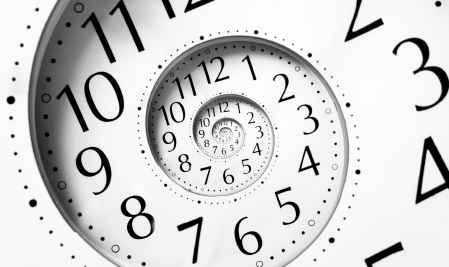This time we will discuss Time Frame (TF) and how to choose the correct TF. Try to look at the right of the chart. There is a time frame from the chart. There are many choices of time frames provided by trading platforms, ranging from 1 minute, 5 minutes, 15 minutes, 30 minutes, hourly, 4H, daily, weekly to monthly. Why is the TF a thing that needs attention?

Mmm … this is it, if we do technical analysis, actually we do a grouping of data as a basis for making the analysis. Well, the grouping of data here is based on time, so with the basis of different time groups, the results of the analysis we get can also be different.
Chart with a 5 minute time frame, for example, shows the price movement of a pair by grouping data every 5 minutes. Hourly time frame shows the pair price movements with grouping of data every hour. And so on. Data grouping in this TF will be clearly visible and easier to understand if you use a candlestick chart type.
Try to close the cursor on each candlestick bar, then information about low, high, open, close and volume of transactions will emerge at a certain time range. Well, all the data is grouped according to the time frame chart. That is, if the chart for example uses a daily time frame, then what appears in the information in each candlestick bar is the low price, high, open, close and transaction volume on that day/date.
Well, because of the nature of pair price movements that are always dynamic (up and down) at any time, then the trend (direction) may be different in the time frame. For example, it could be that the trend at daily TF goes up, but if you see the trend at 5 minute time frame at the same time it is down. That means, on that day seen from previous days, prices tend to increase, so if we see the trend in the daily time frame looks up, but in the last few moments for example in the last 20 minutes it is experiencing a decline so if we look at the TF 5 minutes the trend looks down. Until here, hopefully you have begun to understand, that conclusions that can be taken from observing charts in the same pair at different TF can be different.
Frankly I am often amused when listening to conversations between traders in chat rooms. There is a trader who says, “wow, GU goes up here” but another trader answers, “how about that? clear down, really. “Why, how can it be different? I thought they were watching a chart with a different TF, so the conclusions they took against the same pair movement trend were different.
Maybe you then wondered: well, then … what’s the best time frame? I can’t say one time frame is better than another time frame. Maybe while I can explain that in general, usually a trader will choose a TF that matches their trading type. Judging from how long they hold a position from open to close, traders can be classified as:
Scalper is a trader who tends to open-close transactions in a short period of time with low target pips. This type of trader tends to use charts with a time frame between 1 M to 30 M.A
Day trader is a trader who used to open-close transactions within a day. They usually choose time frames between hourly to daily.
Swinger is a trader who usually performs open-close positions in the daily to weekly range, even months. Well, they usually use 4H time frames, daily to monthly.
The picture above does not have to be used as a benchmark anyway … in practice, there are also swinger traders who use 15M time frame at certain times. I can only recommend, try it yourself try observing various time frames to find out which one best suits your trading style.




